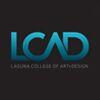
Turn what you love into what you do! The University of Colorado Denver offers BFA degrees in 3D Graphics and Animation, Digital Design, and Illustration. Learn more about our creative degrees.

| Ranking | School | State |
|---|---|---|
| 1 | ArtCenter College of Design | California |
| 2 | California Institute of the Arts | California |
| 3 | California College of the Arts | California |
| 4 | Otis College of Art and Design | California |
| 5 | University of California, Los Angeles | California |
| 6 | University of Southern California | California |
| 7 | University of Washington | Washington |
| 8 | San Diego State University | California |
| 9 | Academy of Art University | California |
| 10 | Portland State University | Oregon |
| 11 | San Jose State University | California |
| 12 | California State University, Long Beach | California |
| 13 | Oregon State University | Oregon |
| 14 | California State University, Los Angeles | California |
| 15 | California State University ,Fullerton | California |
| 16 | California Polytechnic State University, San Luis Obispo | California |
| 17 | Laguna College of Art and Design | California |
| 18 | University of Hawaii at Manoa | Hawaii |
| 19 | Pacific Northwest College of Art | Oregon |
| 20 | Woodbury University | California |
Our 2021 ranking of the Top 20 Graphic Design School Programs on the West Coast . We considered over 50 West Coast colleges with graphic design programs for this year's rankings. For an explanation of our ranking criteria, click here. For our rankings purposes we define the west coast as California, Oregon, Washington, Hawaii, and Alaska.

Founded in 1930, ArtCenter College of Design has campuses in Berlin and Pasadena, and satellite studios in Los Angeles at the Peterson Automotive Museum. The school serves approximately 2,250 students representing more than 40 countries. Academic offerings include 11 undergraduate and seven graduate degree programs in a variety of Applied Arts, Industrial, and Visual Design Disciplines. A joint MS/MBA program with the Drucker-Ito School of Management is also available.
Programs for aspiring graphic designers include BFA and MFA degrees in Graphic Design (Gx) and a 132-unit Designmatters Minor. The undergraduate graphic design program prepares students for careers in print and branding, packaging and environmental graphic design, motion and visual interaction design, transmedia, and spatial media. Course highlights include Information Design, Materials of Art and Design, Motion Design, Narrative Imaging, Package Design, Transmedia, and Visual Interaction Design. Students will complete 87 studio units, which allows them to create an emphasis area through electives. All students will have the opportunity to complete a portfolio and career preparation courses.
The graduate program, known as MGx, has two- and three-year options. The two-year option is five terms and the three-year option is seven terms. Students who need additional design skills typically choose the three-year program. Both programs require a thesis, Graduate Studio, Graduate Seminar, Professional Leadership, and Graduate Portfolio courses. MGx students also have the opportunity to complete Graphic Design Internship OR Studio Independent Study OR Testlab Berlin.
ArtCenter Gx graduates “are highly sought after by the most exciting and disruptive global brands,” says the school. They have been hired at Uber, Tesla, Google, Facebook, Nike, and creative agencies such as IDEO, R/GA, Local Projects, “and other future-forward organizations.”

California Institute of the Arts (CalArts) opened its doors in 1970. Founded by Roy and Walt Disney, the school began as a multidisciplinary community of artists. Today, the school offers degree programs in art, design, film, music, theater, and dance, and is the nation's first postsecondary institution to offer graduate and undergraduate degrees in both the visual and performing arts.
Serving just over 1,500 students, CalArts provides more than 70 degree programs, including the unique Doctor of Musical Arts (DMA). Programs are administered within six schools including the School of Critical Studies, The Sharon Disney Lund School of Dance, the School of Art, the School of Film/Video, The Herb Alpert School of Music, and the School of Theater. The School of Art houses the Graphic Design Program, which has BFA and MFA options. A Digital Arts Minor and an Interschool Degree option are also available.
The Minor is “designed to help undergraduate students grasp the knowledge to build, engineer and design innovative custom systems,” says the school. The Interschool Degree Option is available to a small number of graduates and advanced third- and fourth-year undergraduates whose skills and artistic interests warrant pursuing a degree in more than one School.
The BFA program is a full-time, four-year program that prepares students for a career in print and publication design, web and interface design, motion graphics for broadcast and film, branding, identity and type design, and design history and education. Each year in the program, “builds on the experience of the previous as a sequence of additional classes explore image-making, typography and design history. Baseline coursework is followed by more specialized classes in areas such as web design, motion graphics, and type design.” In addition to core studio classes, all candidates in the Program are required to pass a Graduation Portfolio Review in order to complete the program and obtain the BFA degree.
The MFA program offers two- and three-year options. During the two-year program, students deepen and refine their work through a set of required and elective courses covering subjects such as type design, web design, typography, motion graphics, design theory and design history. Students will also work with visiting designers on short-term projects within the focused studio environment.
“The three-year program is designed for students who do not have a Graphic Design undergraduate degree, but who typically demonstrate a talent and enthusiasm for design, and a level of expertise in their given field. The heart of the Program is the Visual Literacy course, a critique class comprised of a series of structured projects designed to teach design principles, process, methodology and skills.” Students in both programs are required to pass a Thesis Review to obtain the MFA degree.

California College of the Arts (CCA) was founded in 1907 by a German-born cabinetmaker with links to the Arts and Craft Movement. Today, the school is one of America’s top art and design colleges with 100 full-time and 400 part-time faculty members that serve 1,850 students from 42 states and 49 countries. Degree options include 22 undergraduate and 11 graduate programs.
Options for aspiring graphic designers include BFA degrees in Graphic Design and Interaction Design, and an MFA in Design that focuses on Graphic Design, Industrial Design, and Interaction Design.
Highlights for all programs include the opportunity to immerse in the areas of Brand Identity, Motion Graphics, Print and Screen-Based and Interactive Design. Elective offerings will “strengthen” students “design toolkit,” says the school and CCAs extensive internship program provides real-world experience. Students have the opportunity to intern for design firms, publishing houses, and nonprofits as they work toward a polished thesis project.
“Situated within a top art college, the Graphic Design program also benefits from an atmosphere of hands-on making and experimentation. Students are constantly giving and getting feedback and testing their ideas with faculty, visiting experts, and peers.”
Students also benefit from CCAs location in the San Francisco Bay Area, home to Apple, Netflix, IDEO, YouTube, Pinterest, NASA, Google, and many other technology companies. Graduates of the Graphic Design Programs have landed positions at innovative design firms, museums, publishing houses, technology companies, nonprofits, and more.

Otis College of Art and Design (OTIS) was established in 1918 by founder and publisher of the Los Angeles Times General Harrison Gray Otis. Serving approximately 1,100 full-time students, OTIS is a private nonprofit institution and national leader in art and design education. “Alumni and faculty are Fulbright, MacArthur, and Guggenheim grant recipients, Oscar awardees, legendary costume designers, leaders of contemporary art movements, entrepreneurs, and design stars at Apple, Abercrombie & Fitch, Pixar, DreamWorks, Mattel, Nike, and Disney,” says the school.
OTIS offers 11 BFA degree programs including Architecture/Landscape/Interiors, Digital Media (Animation, Game and Entertainment Design, and Motion Design), Fashion Design, Communication Arts (Graphic Design, and Illustration), Fine Arts (Painting, Photography, and Sculpture/New Genres), Product Design, and Toy Design. OTIS also awards an MFA degree in Fine Arts, Graphic Design, Public Practice, and Writing, as well as a variety of minors and certificate programs.
The BFA in Graphic Design is offered through the Communication Arts Department. A Minor in Advertising Design and a Graphic Design Certificate are also available. Formats covered in the BFA Graphic Design Program include branding and logo development, posters, books, package design, apps, websites, and interactive design. Students in the program “learn to articulate a critical and theoretical perspective and develop graphic design skills, such as type design and traditional letterpress,” says the school. “Strong craft and presentation skills are emphasized throughout,” with students achieving “the highest level of design excellence through critiques, reviews, and workshops.”
Course highlights for the program include Advanced Image Making Projects, Communication Studio I-IV, Connections through Color and Design, Creative Action Studio, Drawing and Building Form, Systems and Identity Design, Type and Alternative Media, Typography, Visual Language, and Writing in the Digital Age. A Senior Thesis/Research Paper, Senior Project/Seminar, and Capstone are also part of the program.
The MFA in Graphic Design is an accelerated LA-based program that takes 14 months to complete. During the program, students learn to work across media and platforms through a series of visiting workshops, courses in design theory and history, studio projects, and round table discussions. “The coursework engages research, discourse, critical thinking, and iterative process with the goal of discovering many possible design outcomes. In so doing, the program supports students in taking on the challenges and opportunities in contemporary graphic design practice.”
Graduates of the Graphic Design programs at OTIS have landed positions at major companies and studios such as ABC, Inc. and Partners, Apple, Anthropologie, Capitol Records, Conde Nast Publications, Disney Consumer Products, GUESS?, Metro-Goldwyn-Mayer, Ogilvy Worldwide, Sony Music, Twentieth Century Fox, Warner Bros. Records, and Young & Rubicam.

Founded in 1919 as the Southern Branch of the University of California, University of California Los Angeles (UCLA) is considered one of the leading arts and cultural centers in the western United States. The school, which hosts more than 1,000 visual and performing arts events each year attracting more than 500,000 patrons, serves nearly 45,000 students enrolled more than 125 undergraduate majors in 109 academic departments, and master’s degrees in over 80 academic and professional fields.
Programs for aspiring graphic designers are offered in School of Arts and Architecture, Department of Design Media Arts (DMA). Options include BA and MA degrees in Design Media Arts. The BA in DMA program “emphasizes innovative creation with digital and mass media within the context of a public research university,” says the school. The curriculum highlights “a solid foundation in form, color, space, motion, typography, and interactivity, followed by a broad selection of area studies courses in video, visual communication, network media, game design, and narrative.”
Course highlights include 3D Modeling and Motion, Drawing and Color, Network Media, Special Topics in Interactivity and Games, Special Topics in Visual Communication and Image, Word + Image, and Video.
Other program highlights include courses taught as studios of no more than 22 students, the opportunity to take other electives from the university to broaden the experience, and a Senior Project “where each student defines their own” project “based on individual interests within the areas of interactivity and games, video and animation, and visual communication and image.”
The two-year MFA in DMA begins with skills and theory courses, then progresses to “thesis definition, exploration, and production, through a series of studio and seminar courses.” Highlights include Interactivity, Media Histories, Programming Media, and Special Topics in Media Arts: Contemporary Media Arts. Sixteen units of electives is required, providing an opportunity for students to select courses outside the department.
Students in the program will take several Graduate Seminar Courses and they have the opportunity to work as teaching assistants and to collaborate with faculty members on research projects.

Established in 1880, University of Southern California (USC) is a private research that employs 4,000 full-time faculty serving 46,000 students. More than 200 undergraduate programs and over 400 graduate and professional programs are offered at USC across more than 20 schools, colleges, and academic units. In addition to the Los Angeles campus, USC offers programs and has centers in Marina Del Rey, Orange County, Sacramento, Washington, D.C., Catalina Island, Alhambra, and around Southern California.
Programs for aspiring graphic designers are offered at USC Roski School of Art and Design. Founded in1895, Roski is one of the oldest art schools in Southern California. Degree options for designers include the BFA, MFA, and Dual BFA/MFA in Design. A Minor in Communication Design is also available.
The Design BFA is a four-year pre-professional that begins with foundation courses such as Drawing and Illustration. Students will gain experience “with a wide array of artistic media,” says the school, and participate in “skills-based workshops in 2D and 3D design-specific media.” Design coursework is “complemented by a series of critical theory seminars, professional design internships, and international design study tours,” along with “a senior thesis and Minors in Advertising, Business, Communication, Entrepreneurship and Marketing.” A required 26 units of electives allows students to refine their focus.
Course highlights for the BFA program include 3D Design Studio, Art and Design Studio, Digital Tools for Design, Illustration for Art and Design, Publication Design, Typography, and Web Design.
The Design MFA is a five-term, 56-unit studio-based program administered in collaboration with the Graduate School, It is a professional degree in the practice of design that highlights mentored relationships with design faculty, participation in regular seminars, and discussions and studio visits with leading visiting designers, writers and theorists from around the world. The Roski School's partnership and affiliation with the contemporary design community in Los Angeles, such as American Institute of Graphic Arts (AIGA), is also critical component of the MFA Design Program.
Students will complete an MFA Design Thesis and the opportunity to gain experience as a teaching assistant is available on a competitive basis. Field internship opportunities, design study tours to Asian or European cities, and the option to take Design Studio Co-Lab are other program highlights.
The 24-unit Communication Design Minor includes coursework in graphic design, advertising, marketing, and business. Course highlights include Advanced Design Projects, Business and Professional Communication, Communication and Social Media, Graphic Design in Fashion, Ideas in Intermedia, Marketing of Creative Disruption and Innovation, Special Projects in Design, and Video Installation and Moving Image Environments.
Students in the Communication Design Minor may also take advantage of the New York or International Design Study Tours.

Established in 1861, University of Washington (UW) serves more than 54,000 students at campuses in Seattle, Tacoma, and Bothell. The UW’s 18 colleges and schools offer more than 570 degree options across 300+ programs, with more than 1,800 undergraduate courses alone each quarter. Each year, UW Bothell confers more than 12,000 bachelors, masters, doctoral, and professional degrees.
The school’s College of Arts & Sciences houses the School of Art + Art History + Design (SoA+AH+D), which offers a Bachelor of Design (BDes) in Visual Communication Design and a Master of Design (MDes). One of the largest undergraduate programs at the University of Washington, Visual Communication Design is a professional program “primarily aimed at visual communication in the corporate, institutional and municipal sectors,” says the school.
Students in the programs engage in all phases of typography, information design, design systems, exhibition design, publication design, new media, and visual methods/processes. Course highlights for the BDes include Corporate Identity, Exhibition Design, Information Design, Interface Design, Marks + Symbols, Publication Design, and Visual Systems. A Design Capstone is also part of the program as well the opportunity to complete an internship.
The two-year MDes is a terminal degree “for designers who wish to deepen their practice by engaging in advanced research and scholarship, or who are interested in pursuing academic careers.” The program “stresses interdisciplinary work and research-driven design practice.” MDes students have taken courses and participated in research projects with the Business School, the College of Engineering, the Department of Biomedical Informatics, the Department of Communication, the Department of Psychology and the School of Nursing. Theses have addressed topics such as topics as aviation, healthcare, information visualization, and urban planning.
Students in both programs will have the opportunity to compete for more than 100 seats in the SoA+AH+D study abroad program to explore art, art history, and design in an international context. Past students have studied in Japan, Rome, Spain, and Tuscany.

Serving 33,870 students and open since 1897, San Diego State University (SDSU) is the oldest and largest university in San Diego and the third largest in the state. With nearly 200 degree programs, SDSU houses seven colleges, including the College of Professional Studies and Fine Arts (PSFA), which has 10 core departments and schools, including the School of Art + Design. Here, aspiring designers can earn a BA (in Applied Arts and Sciences), MA or MFA with a Graphic Design Emphasis.
The Graphic Design program “is structured as a sequence of core studios in design fundamentals, typography, image-making, and history courses, that progressively introduce form and concept-development skills across a range of media,” says the school. Upper level students will have the opportunity to work with a wide range of clients, organizations, and communities through SDSU’s internship and Design Studio programs. They will solve “contemporary design problems” by applying the skills acquired during the first two years of the program.
During the final year of the program, students will build a professional portfolio that prepares them for entry-level positions in a variety of areas within graphic design.
Graduates hold titles such as Advertising Artist, Corporate Image Designer, Graphic Designer, Graphic Illustrator, Layout/Production Artist, Print Production Specialist, and Technical Illustrator, among others.

Established in 1929, Academy of Art University is a family-owned institution that serves more than 7,200 students from 112 countries, making it one of the largest private, accredited art and design schools in the nation.
Program offerings range from acting, animation and architecture to visual development, web design, and writing for film and television. Degrees are offered at both the undergraduate and graduate levels, and many programs are available entirely online.
Academy of Art houses the School of Graphic Design where students are mentored by faculty with “years of graphic design experience working with top-flight studios and brand-name companies with strong ties to the industry,” says the school. Areas covered include Branding, Communication Design, Editorial Design, Environmental Design, Experience Design, Innovation, Motion Graphics, Packaging, Print, Typography, and User Experience.
Programs in the School of Graphic Design lead to the AA, BFA, MA, MFA, and Certificate. AA students can expect to take 66 units of coursework, BFA students will complete 132, and the Certificate requires 120 units of study. Students seeking an MA in Graphic design must complete 36 units to graduate and MFA students must complete 63.
Course highlights for the undergraduate programs include Branding Principles, Composition for the Artist, Design Technology, Human-Centered Design, Interaction Design, Motion Graphics, Package Design, Programming and Culture, Visual Communication, Visual Systems, and Web Design. BFA students will also complete Internship in Graphic Design and Senior Portfolio.
MA students can expect to take courses such as Making Ideas Visible, Type Experiments, User Experience Design, and Visual Thinking. MA Portfolio Seminar is also part of the program. MFA students will take many of the same courses as well as three Thesis courses, Directed Study, Professional Practices for Designers & Advertisers, and the Internship.
School of Graphic Design graduates hold positions such as Creative/Art Director, Graphic Designer, Product Designer, and User Experience (UX) Designer. Companies that have hired Academy of Art graduates include Apple, Google, global design company IDEO, Nike, R/GA (advertising and marketing), and Square, to name a few.

Portland State University (PSU) opened its doors in the summer of 1946 to just 220 students. Today, the school serves nearly 24,000 students, making it the biggest art school in the Pacific Northwest.
PSU offers more than 200 degree programs in nine colleges and schools. The College of the Arts houses the schools of Architecture, Art + Design, Music, and Theater + Film. With around 1,400 students enrolled, the School of Art + Design offers BA, BS, BFA degrees and Minors in areas from Art History to Graphic Design.
PSU’s Graphic Design Program has options leading to the BFA and a Minor in Graphic Design (MAGD). The Minor consists of 32 credit hours of study and start terms are flexible. Course highlights for the program include Communication Design Systems, Computer Graphics for Art & Design, Digital Imaging & Illustration, Narrative and Communication Design, and Typography.
The curriculum for the BFA consists of lower and upper division courses. Lower level courses “introduce students to principles of basic design and art and their specific applications in graphic design,” says the school. They also provide a comprehensive studio experience with an increased emphasis on design thinking.” Upper level courses “focus increasingly on areas of specialization, opportunities for engaging in professional internships, and work to develop a professional portfolio as the culmination of students’ design studies.”
Other program highlights include the option to add the Advertising Management Minor, the Show & Tell and Matthias Kemeny Endowed Design Lecture Series, participation in the Annual Student Showcase Be Honest, and the Graphic Design Senior Showcase known as Fresh. Students also have the opportunity to sign up for Summer Study Abroad experiences such as Art History in Rome, Berlin: The Fall and Rise of an Art City, or Mixed Media and Printmaking in Guanajuato, Mexico.

San Jose State University (SJSU) is known as “Silicon Valley’s Public University.” Established in 1857 and employing nearly 3,600 employees, the school “is an essential partner in the economic, cultural and social development of Silicon Valley and California.”
More than 250 areas of study at the bachelor’s, master’s, and doctoral levels are offered in eight colleges. Programs for aspiring graphic designers are offered in the College of Humanities and the Arts, Department of Design. Options include a BFA and a Minor in Graphic Design, and a BA in Design with a Concentration in Graphic Design (BA Design GD).
The Graphic Design Program at SJSU was established in 1969 and remains the only program in a public university in the Silicon Valley. Thanks to the school’s location, students “are able to work with design and technology industries, as well as professional and service organizations, to connect with broader design communities,” says the school. “These experiences, coupled with the internship they are required to complete, will arm students with the skills and confidence that make them effective contributors of the professional graphic design world.”
Other program highlights include a curriculum that focuses on user experience and interaction with visual design a well as theory and professional practice, and the opportunity to attend special classes and workshops led by studio professionals and faculty members.
Course highlights for the BA Design GD program include Design Values and Professional Practices, Introduction to Graphic Design, and Visual Communication & Process. BFA course highlights include 3D Branding & Promotion Design, Advanced Graphic Design, Advanced Typography, Exhibition Design & Info Graphics, Motion Graphics, User Interface & Interaction Design, and Visual Literacy: Image Making.
To enhance the degree, students in the BA program are encouraged to add a minor from one of the following departments: Anthropology, Art and Art History, Business, Computer Science, English and Comparative Literature, Environmental Studies, General Engineering, Global Studies, Journalism and Mass Communications, Philosophy, Psychology, and Urban and Regional Planning.
BA students will complete a final Senior Project, and BFA students will have the opportunity to present their work at the BFA Senior Show, held in the Spring.

California State University-Long Beach (CSULB) opened on September 28, 1949 in a small converted apartment building under the name Los Angeles-Orange Country State College. The school had 160 students and 13 full-time faculty. Today CSULB employs more than 4,000 professionals serving over 38,000 students.
One of the 23 campuses of the California State University System, CSULB offers more than 300 programs in eight colleges. One of the school’s most popular colleges is the College of the Arts. Made up of six separate academic units, the College houses the School of Art (SoA), which offers a BA in Studio Art with a Focus in Graphic Design, a BFA in Art: Graphic Design Option, and an MFA with a Concentration in Studio Art: Graphic Design Track. A 21-unit Graphic Design Minor is also available.
The BFA program has limited enrollment, so students seeking this degree are first admitted into the BA in Studio Art Program, where they can focus in Graphic Design. Course highlights for the BA program include Foundation or Introduction to Animation, Color Theory, Computer Art, Life Drawing, Photography, Printmaking, Transdisciplinary Practice, and Typography.
The BFA in Graphic Design “takes a broad approach to the field, including graphic explorations into various media, both traditional and electronic, and also through the lens of advertising art direction,” says the school. Consisting of 132 units, the program consists of required courses such as Graphic Design I-VI, which includes Introduction and Intermediate Graphic Design, Exploration and Experimentation, Development and Analysis, Packaging Design, Advanced Topics, and 5D: Designing the Future.
Students will also take Advertising I-III, Advanced Typography, Media Design: Motion Graphics and Media Design: User-Centered Design, Safety and Sustainable Practices for Studio Artists, and Special Studies in Graphic Design. A student internship is also required. This experience offers the opportunity for students to work under the supervision of professionals in the field at selected studios, advertising agencies and in-house creative departments. Internships are six hours per week.
Graduates of the Graphic Design Programs at CSULB are prepared for entry into CSULB’s MFA program and for professional careers in advertising agencies, corporate design departments, design studios, digital design agencies (UX/UI), freelance consulting, motion graphics firms, and web design companies. Graduates are also prepared to seek graphic design positions with industrial and interior design firms.

Founded in 1868, Oregon State University (OSU) serves nearly 31,000 students across campuses in Corvallis, Bend, Newport and Portland Oregon. The state’s largest university, OCU offers 200 undergraduate and 80-plus graduate degree programs in 11 academic colleges.
The College of Liberal Arts houses the School of Arts and Communication, which offers a BFA in Graphic Design (BFA GD). The program begins with a pre-application course then progresses to the Senior Capstone Course Series. Students will leave the program with a polished portfolio.
Graduates of the BFA GD are prepared to seek positions in Advertising, Marketing, Print Media, and others as App, Brand, Editorial, Information, Interaction & Interface, Motion Graphics, Package, and Web Designers.

Founded in 1947, California State University-Los Angeles (Cal State LA) offers nationally recognized programs in science, the arts, business, criminal justice, engineering, nursing, education and the humanities. The school, which houses the active TV, Film and Media Center, serves more than 27,000 students enrolled in 100 undergraduate academic programs in 55 majors and over 100 graduate-level master's, certificate, and credential programs, including two at the doctoral level. Programs are offered through seven colleges and the Honors College.
The College of Arts & Letters consists of nine departments including ART, Communication Studies, English, Liberal Studies, Modern Languages and Literatures, Music, Theatre & Dance, Philosophy, and Television, Film & Media Studies. The ART Department offers BA, MA, and MFA programs that allow students to study everything from Animation to Sculpture.
Programs in the Department are “structured so that students have the opportunity to acquire an understanding of the variety of subjects encompassed within the visual arts as well as to develop excellence in a specific area,” says the school. Specific programs for aspiring graphic designers include BA, MA, and MFA degrees with a Graphic Design/Visual Communication Option.
The 120-unit BA “provides broad initial exposure to visual communication design skills, theory, and practices needed for careers or further study in the design profession.” Course highlights for the program include Advanced Illustration, Color Theory and Perception, Digital Design Tools, Digital Image Processing and Illustration, Interactive Design, and Typography I-III. The program also included Senior Capstone – Graphic Design/Visual Communication.
The MA “provides students with an opportunity to gain stronger educational and experiential basis for a professional career and may be an interim step to pursue further graduate work in the field. It is considered to be a general degree, and is well suited for individuals that are seeking an advanced degree for teaching purposes.” This option requires an exhibition of the MA Project and Project Report or a Thesis.
The 60-unit MFA is a “highly selective, rigorous program for students who have already achieved a strong direction and focus in their work and a high level of technical proficiency in a specific discipline in the Design Option or Studio Arts Option.” The goal of the program is to “develop students into professional artists capable of producing high quality work for public exhibition and presentation, or professional designers well-positioned to be leaders in their industry.” Student will complete an exhibition of the MFA Project and Project Report or a Thesis.
Graduates of the MFA program are “qualified to teach at the university level, and are prepared to take their place within the visual arts or design communities and to make a significant contribution to their fields.”

In 1957, California State University Fullerton (Cal State Fullerton or CSU Fullerton) became the 12th state college in California to be authorized by the Legislature. The school serves nearly 41,500 students enrolled in 110 undergraduate, graduate, and doctorate programs. Programs are offered in eight colleges, including the College of the Arts, which houses the Visual Arts Department—home of the Graphic Design Program. Degree options include the BFA, MA, and MFA in Art with a Graphic & Interactive Design Concentration. A BA in Art is also available.
The Art BA has a varied curriculum that provides a broad education in the visual arts. In addition, through electives (12 units/four courses), students can focus in areas such as drawing and painting, entertainment art/animation, graphic design, illustration, printmaking and many others.
The BFA provides directed studies in Graphic & Interactive Design. The program requires a minimum of 81 units in art: the 27 units of the Lower-Division Core plus 18 units of the Upper-Division Core plus 36 units of Concentration specific art courses. Course highlights include Computer Assisted Graphics, Descriptive Drawing, Design for Interactive Art, Illustration, Lettering and Typography, and Writing in the Visual Arts. Several BFA Capstone options are part of the program as well as an internship.
The 30-unit MA is designed for students seeking careers in visual arts, or those who wish to prepare for further graduate work in the field. Core courses include Graphic Design Seminar and Graphic Design Thesis.
The 60-unit MFA is a rigorous studio program that challenges “students to focus on the goal of becoming professional artists.” The curriculum covers Theory, Criticism (six credit hours), Art History (9), Studio Area of Concentration (24), Studio Electives in Art (12), Independent Study – Research (3), and Studio Project (6).
Students will complete the MFA Project Exhibition, “which constitutes a professional one-person art exhibit. It is installed in one of the department’s graduate galleries and announced for public view by the student as the final phase of the MFA program requirements.”

Founded in 1901, California Polytechnic State University (Cal Poly) is part of the 23-campus California State University System. The school sits on a 9,000-acre campus with more than 25 centers and institutes, making it the second largest campus in California and one of the largest in the nation.
Serving close to 22,000 students, Cal Poly offers more than 100 degree programs in six colleges that focus on hands-on learning.
The College of Liberal Arts houses the Art and Design Department, which offers a BFA with a Graphic Design Concentration. Students in the program will study animation, book arts, design history, identity design, illustration, typography, user experience design (UX), and user interface design (UI).
Graphic Design students are required to create a senior portfolio project that will be reviewed by design professionals. The project is designed to help students “prepare for successful entry into the creative field, says the school.
Graduates of the Cal Poly BFA in Graphic Design have obtained “competitive positions in design studios, creative agencies, in-house creative departments, and in the entertainment and tech industries.” In addition, alumni often return to Cal Poly to provide mentorship to Design students and ongoing support for the program.

Established in 1961, Laguna Beach College of Art and Design (LCAD) began as Laguna Beach School of Art (LBSA). Inspired by “pioneering cultural ventures” of the early 1900s such as the Laguna Playhouse and the Laguna Beach Art Association, this not-for-profit institution serves more than 700 full-time students today, and it is considered one of the leading colleges of art and design in the U.S.
LCAD offers around 30 degree programs, minors, and specialized minors in areas such as animation, experimental animation, game design, illustration, and painting. One of the school’s most popular programs Graphic Design + Digital Media (GD+DM). With around 110 students, GD+DM is the third largest program at LCAD.
GD+DM Graphic Design, Graphic Design w/Illustration Emphasis and Graphic Design w/Action Sport Design Emphasis options. A GD+DM Minor is also available.
This multidisciplinary pathway covers 3D, action sport design, advertising, iPad development, motion, package design, print, video, and the web. Other program highlights include small class sizes, a partnership with Sony Music, an educational partnerships and mentorship programs that provide hands-on design, and internship opportunities.
Graduates of LCAD’s Graphic Design Program enjoy a 98% employment rate and most have found positions in their field. Alumni work for Adobe, Amazon, Apple, Billabong, Capitol Records, Coca-Cola, Disney Interactive, Facebook, Fox Entertainment, Nike, Pixar, Saatchi & Saatchi, Sony Music, Vans, Warner Bros., and many others.

Founded in 1907, University of Hawaii at Manoa (UH Manoa) opened with just 10 students and 13 faculty members. Today, the school serves more than 18,000 students, making it the largest and oldest of the 10 UH campuses. The school is also one of only a handful of universities nationwide to hold the distinction of being a land-, sea-, and space-grant institution.
UH Manoa offers 101 bachelor’s degree programs, 87 master’s degrees, and 59 professional and doctoral degrees in 17 colleges and schools. The College of Arts, Languages & Letters houses the Department of Art & Art History, which offers BFA and MFA degrees in Studio Art with a Concentration in Graphic Design.
The BFA in Graphic Design requires 63 credits – 12 credits of Studio and Art History core courses, Theory and Criticism of Art, 21 credits of studio courses in a chosen media-specific program, 12 credits of upper level Art History courses, and 15 credits of art electives. Students in the program complete the BFA Capstone Seminar, held every Spring and the BFA Graduation Portfolio. In the seminar, students produce new work and collaborate in organizing the annual BFA exhibition.
The MFA in Graphic Design is a three-year (six-semester) in-residence degree program requiring a minimum of 60 credits of advanced level course work, and culminates in a Thesis Exhibition, Thesis Paper and public Oral Defense.
Students in both programs have access to a number of labs housing specialized equipment. For graphic designers, labs include twenty-one Macintosh computer workstations, two auxiliary monitors, a ceiling mounted computer projector, two color scanners, one medium format LaserJet black-and-white printer, two medium & two large format high-resolution color printers, and two high-resolution SLR cameras.
Each workstation is equipped with the latest industry-standard photographic, typesetting, layout, illustration, and multimedia development software.

Founded in 1909, Pacific Northwest College of Art (PNCA) is a fine arts and design college that offers 12 undergraduate majors in art and design, eight graduate degrees, one Post-Baccalaureate program, and eight minors. Serving 650 students, the school has “Four Core Themes” including Critical Inquiry, Professional Practice, Studio Practice, and World View.
The PNCA Graphic Design Program, which leads to a BFA, “encourages integrated design solutions across media,” says the school “and fosters the development of research, critical thinking, and creative practice skills while being grounded in communication theory.” Course highlights for the program include 3D Design, Exploring Visual Culture, Time Arts, Visual Elements 2D, and Writing in Context. A number of independent and collaborative projects are also part of the program.
Graduates of the PNCA Graphic Design Program go on to successful careers at leading agencies and companies such as Nike, Microsoft, and Wieden+Kennedy. Many go on to launch their own creative agencies.

Founded in 1884 as Woodbury College, Woodbury University is one of the oldest institutions of higher education in Southern California. When it was founded, Woodbury University was committed to diversity, so the school’s first class was made up nearly equally of males and females. Today, this commitment to diversity remains one of the school’s core principles. The current male-female ratio is 51% female and 49% male.
Woodbury serves nearly 1,200 students on campuses in Los Angeles/Burbank and San Diego. The school offers 26 practice-based, fully accredited professional and liberal arts majors through four colleges and schools including the College of Liberal Arts and the Schools of Architecture, Business, and Media, Culture & Design.
The School of Media, Culture & Design offers a BFA in Graphic Design. Like all programs in the School, the interdisciplinary Graphic Design program encourages exploration in the “areas between and around” the discipline as students “develop their personal vision and professional paths,” says the school. For example, “Graphic Design students might select a consumer behavior course in psychology to better understand the factors that influence purchasing decisions.”
Other program highlights include small classes taught by nationally recognized faculty, a focus in motion design—a growing segment of design, the opportunity to create projects in advertising, apps, branding, entertainment, packaging, publication, and the web, and access to a designated senior studio with individual working spaces for both digital and production work.
Students will have the opportunity to create portfolios in the areas of advertising, entertainment, environmental or motion design, and publications. An internship is also a required component of the program. Students have interned at 20th Century Fox, Disney Imagineering, Mattel Inc., MTV Networks, Saatchi & Saatchi LA, Screen Actors Guild Foundation, The Getty Center, Universal Studios, and more.
Graduates have been placed at top design firms and entertainment agencies and they have won numerous international and national design awards. Careers include app design, art direction, branding and identity design, environmental or exhibition design, interactive media, print production, signage and wayfinding design, UX design, web design, and many others.